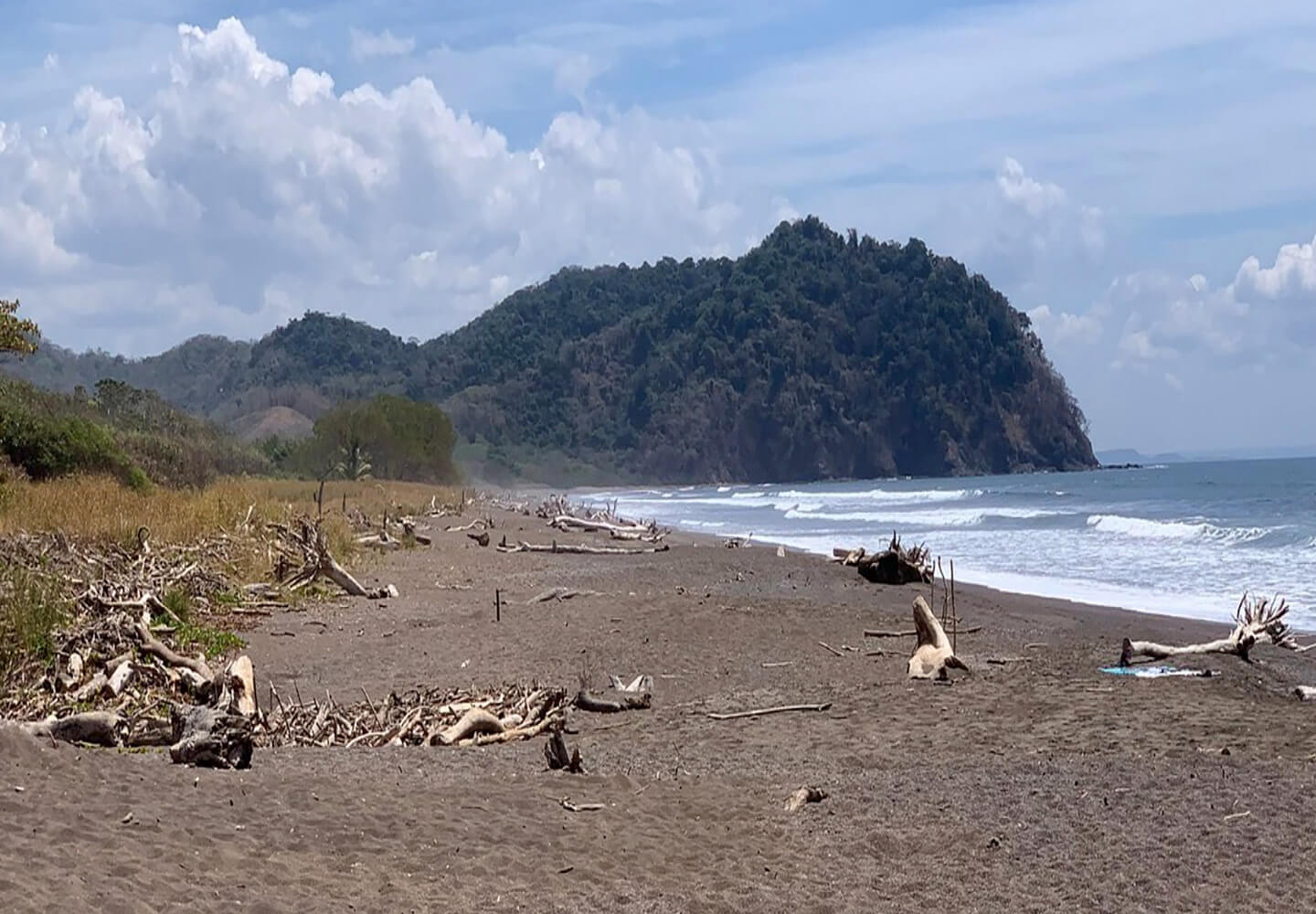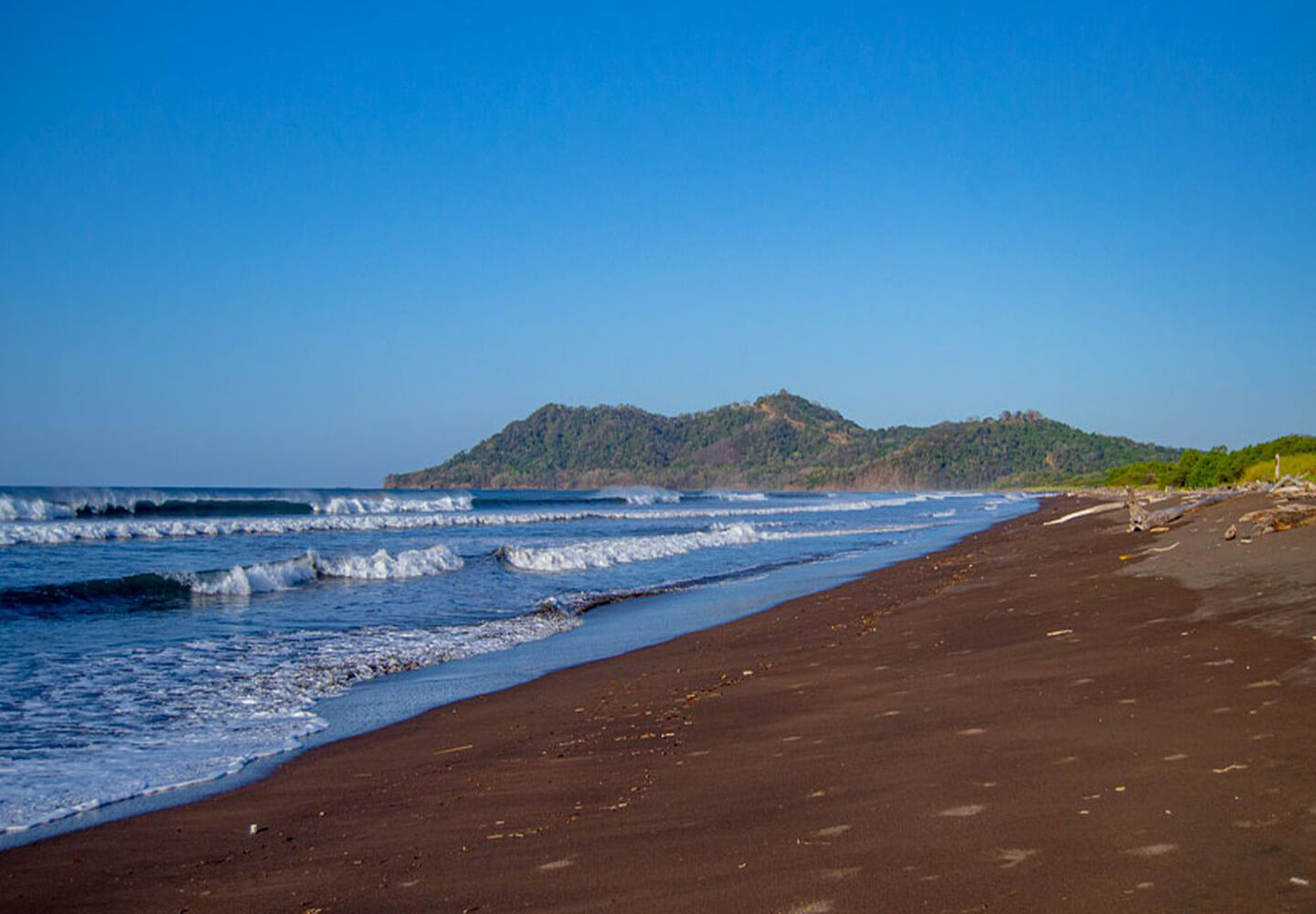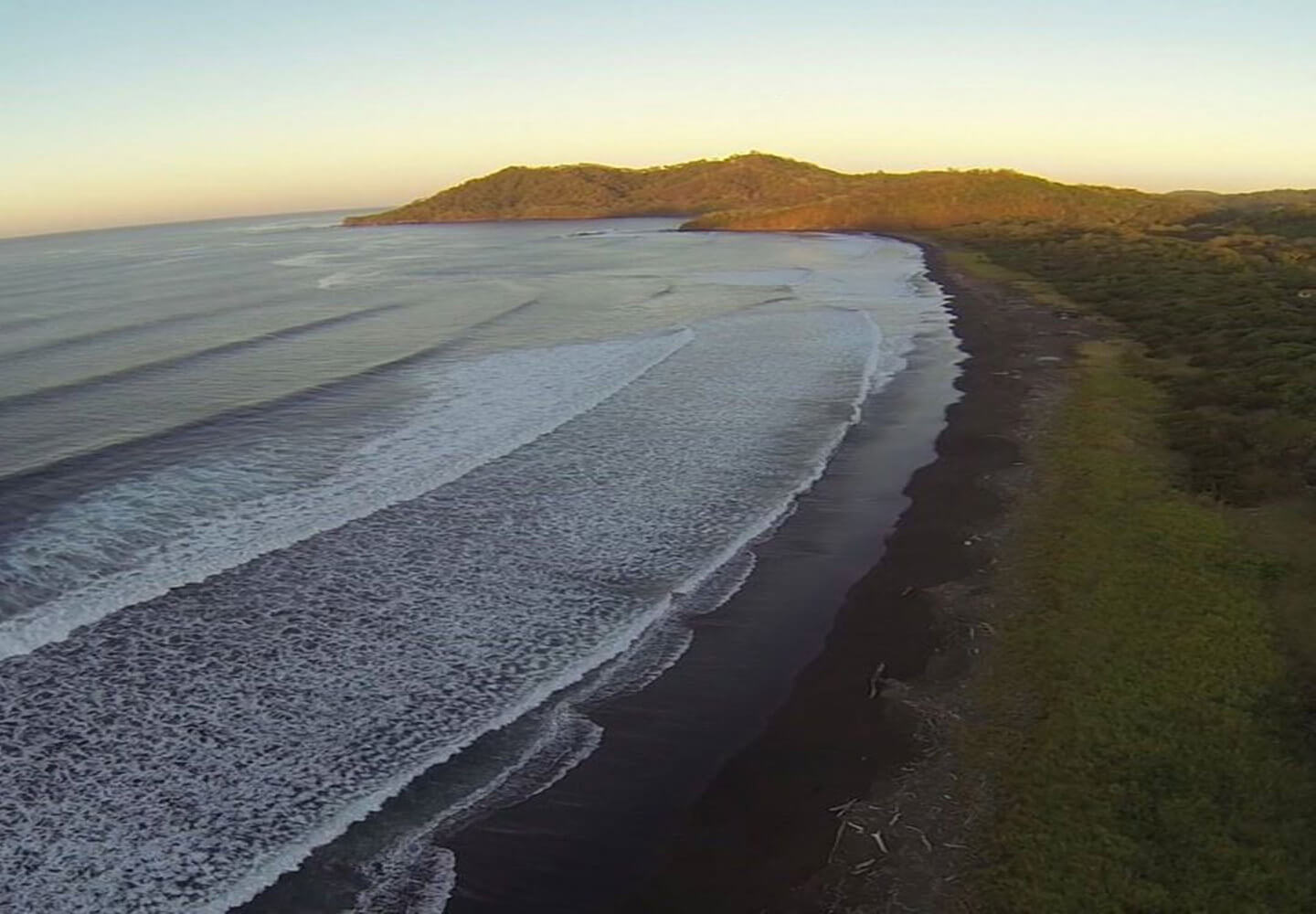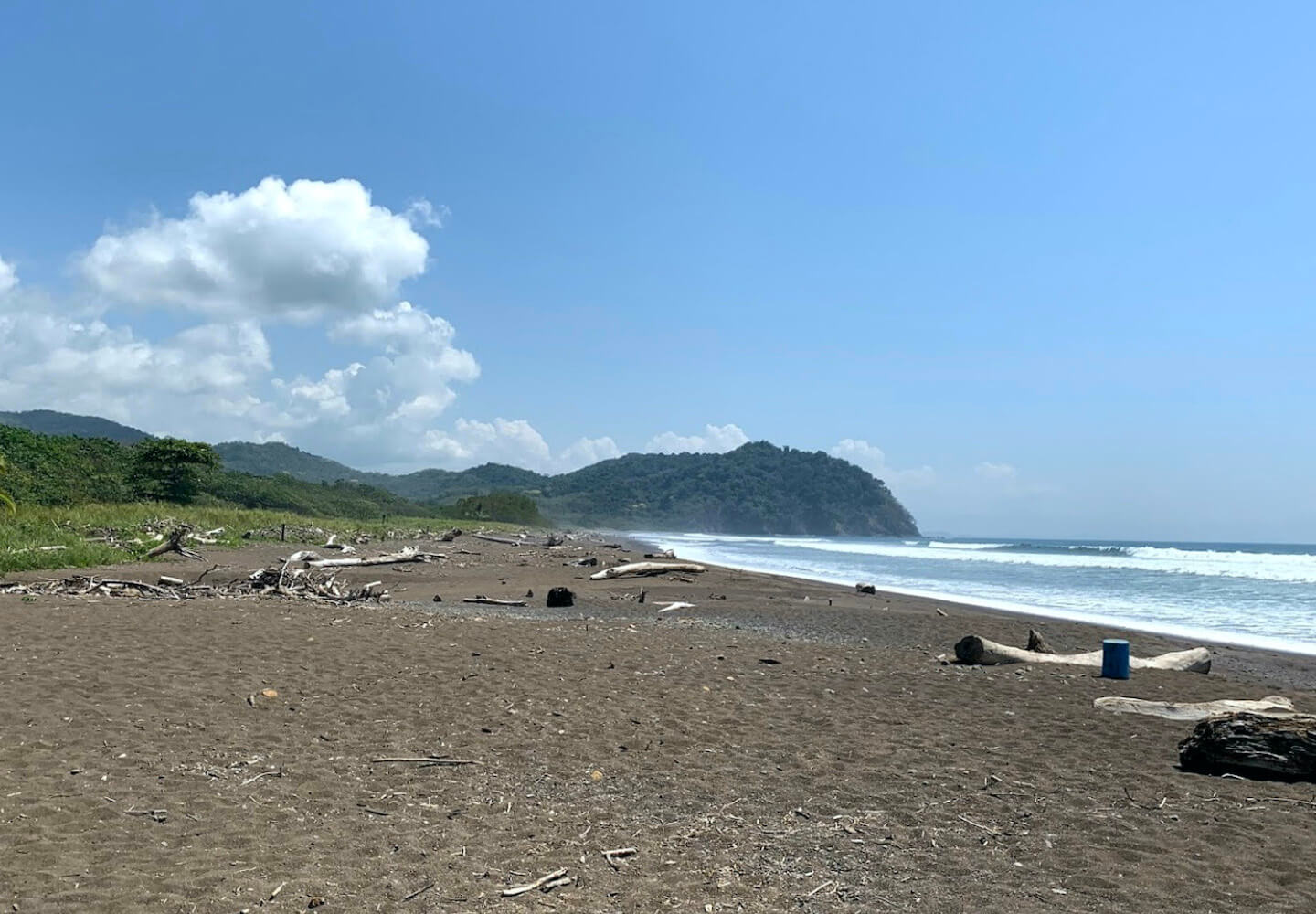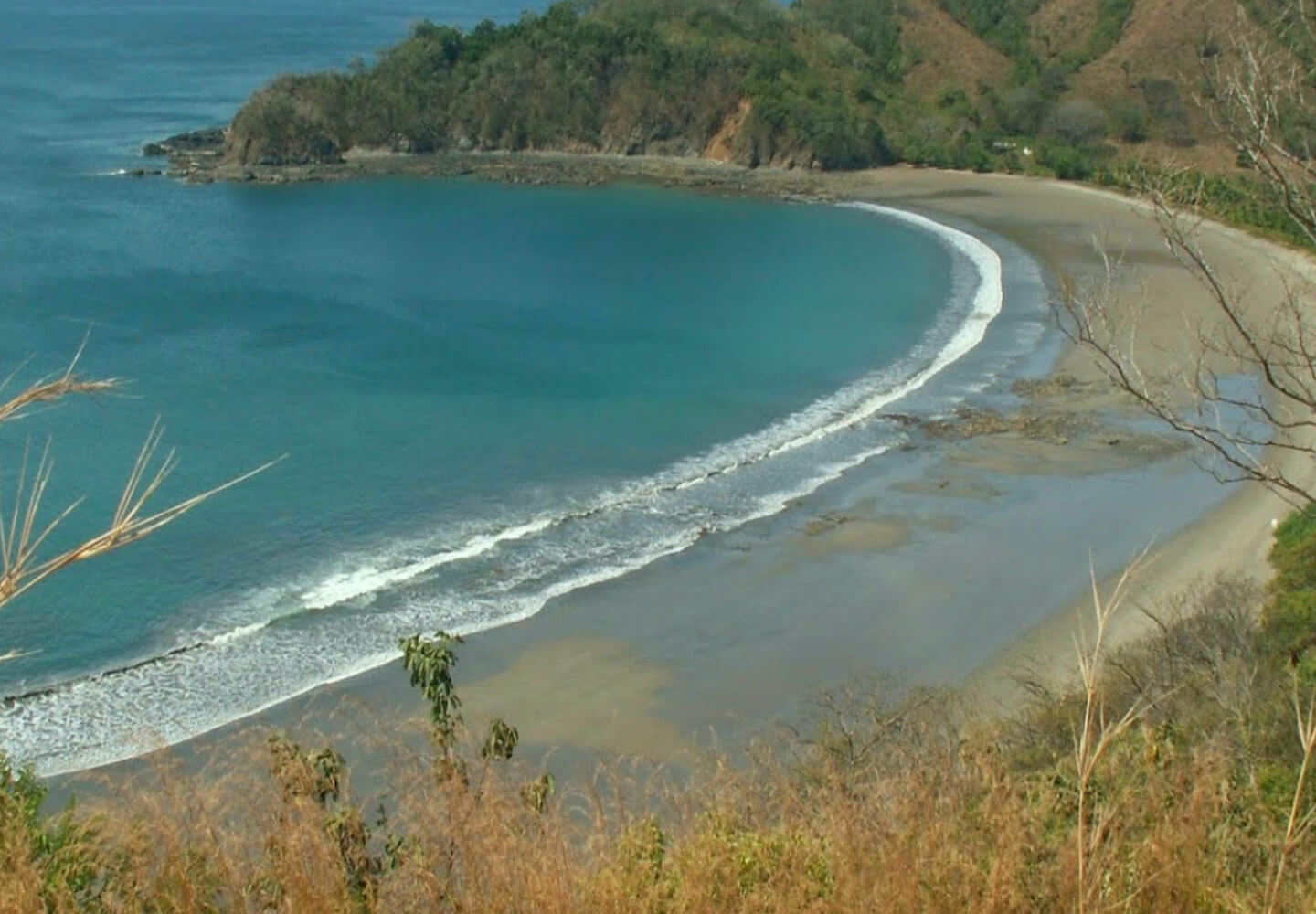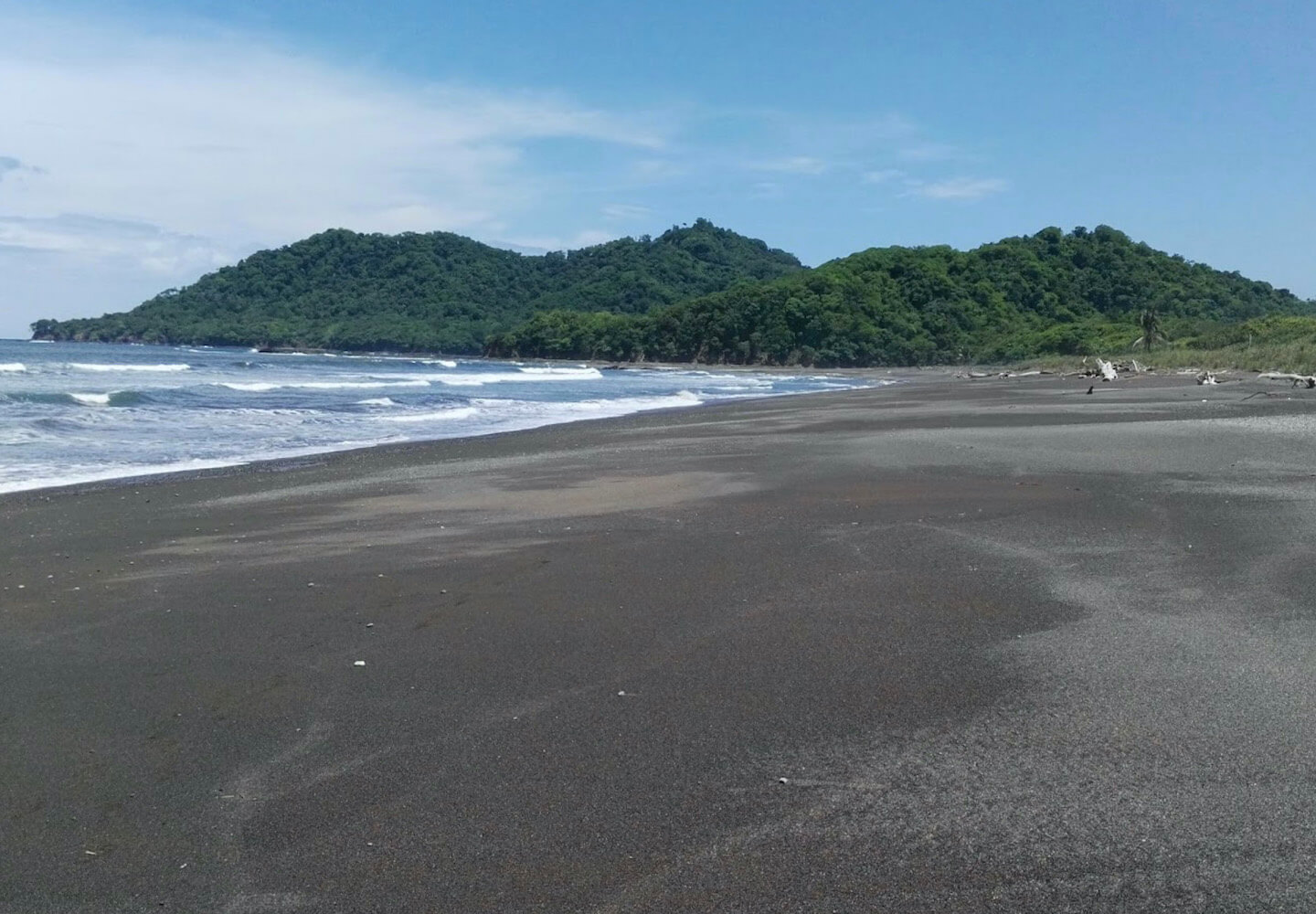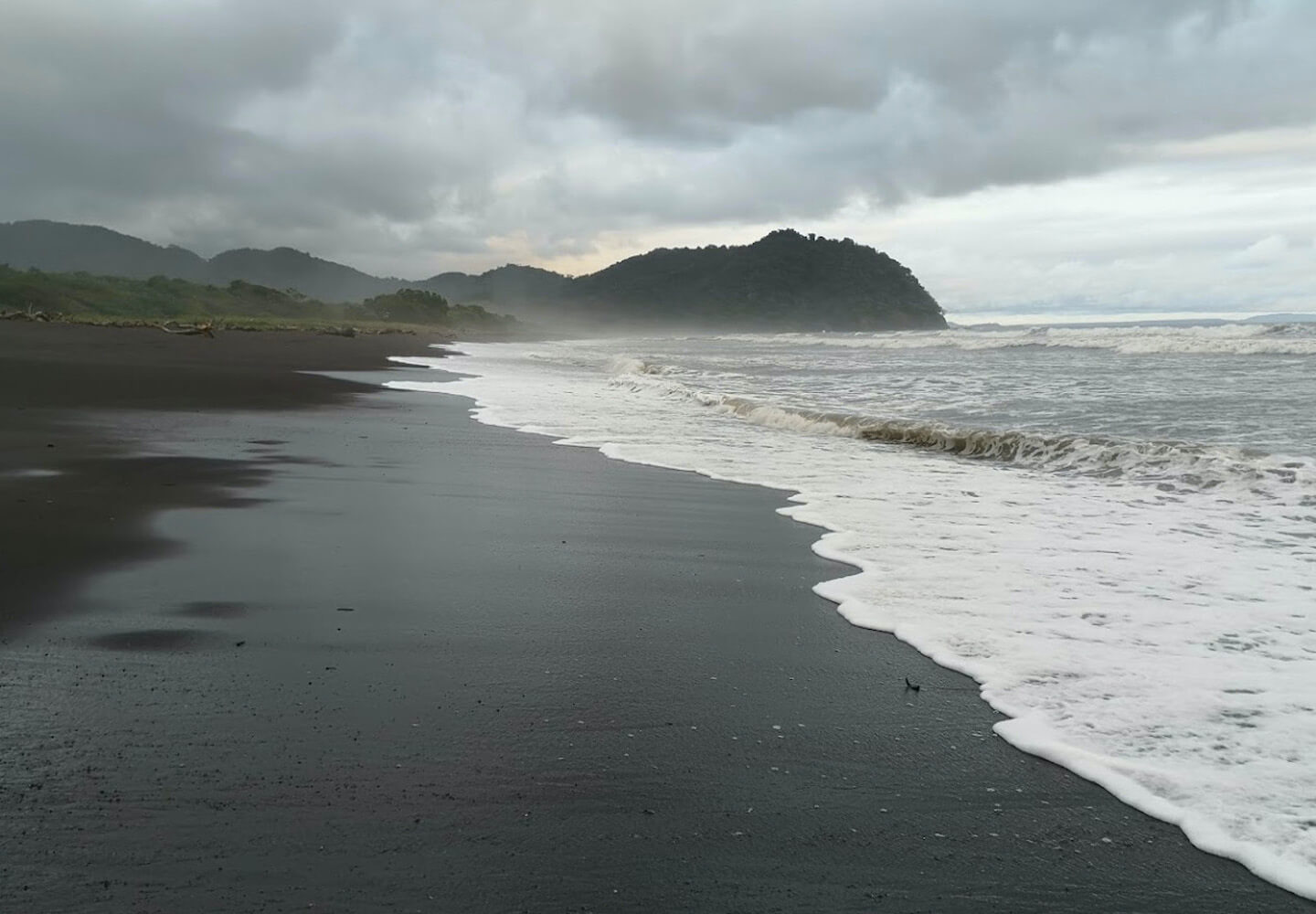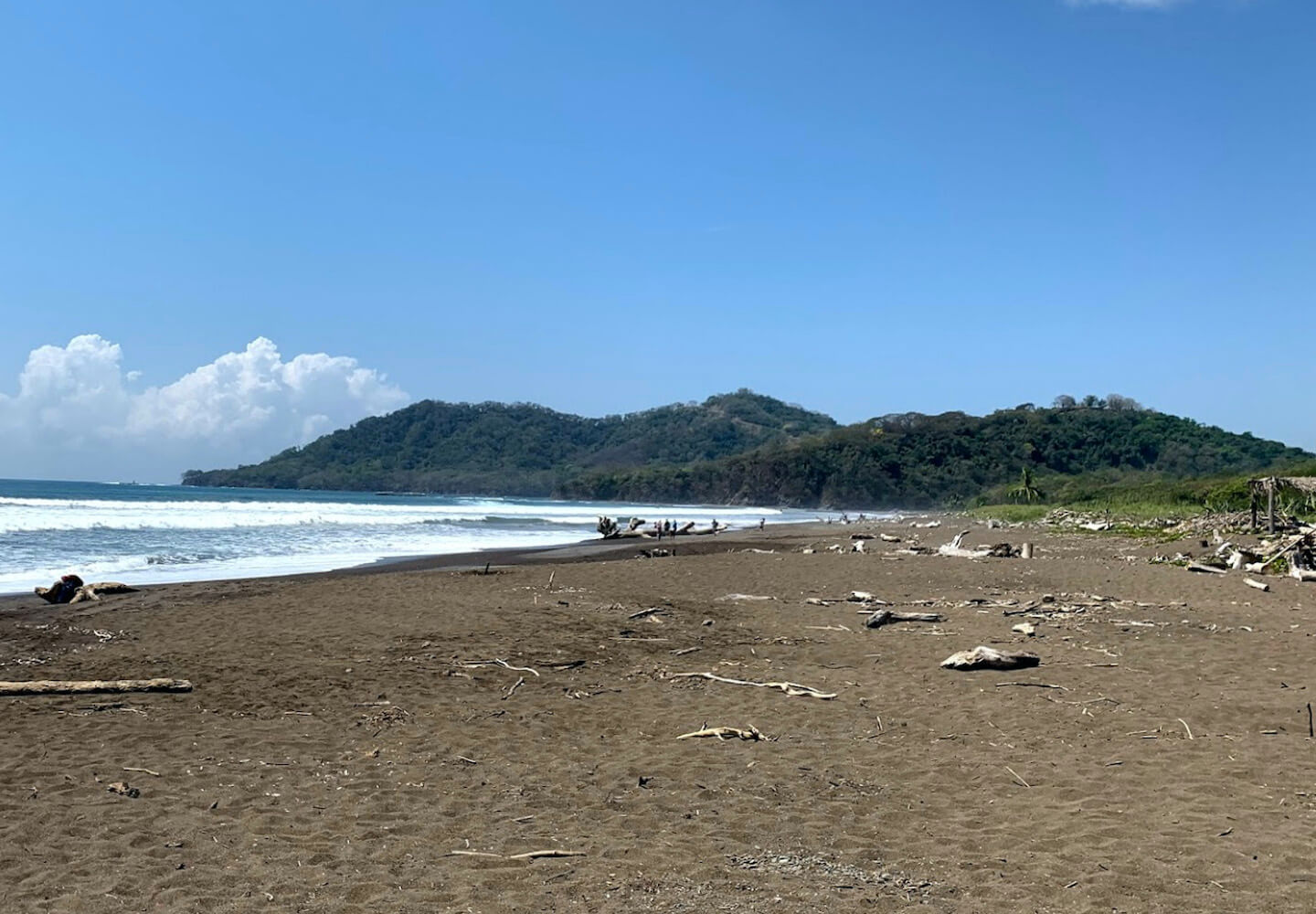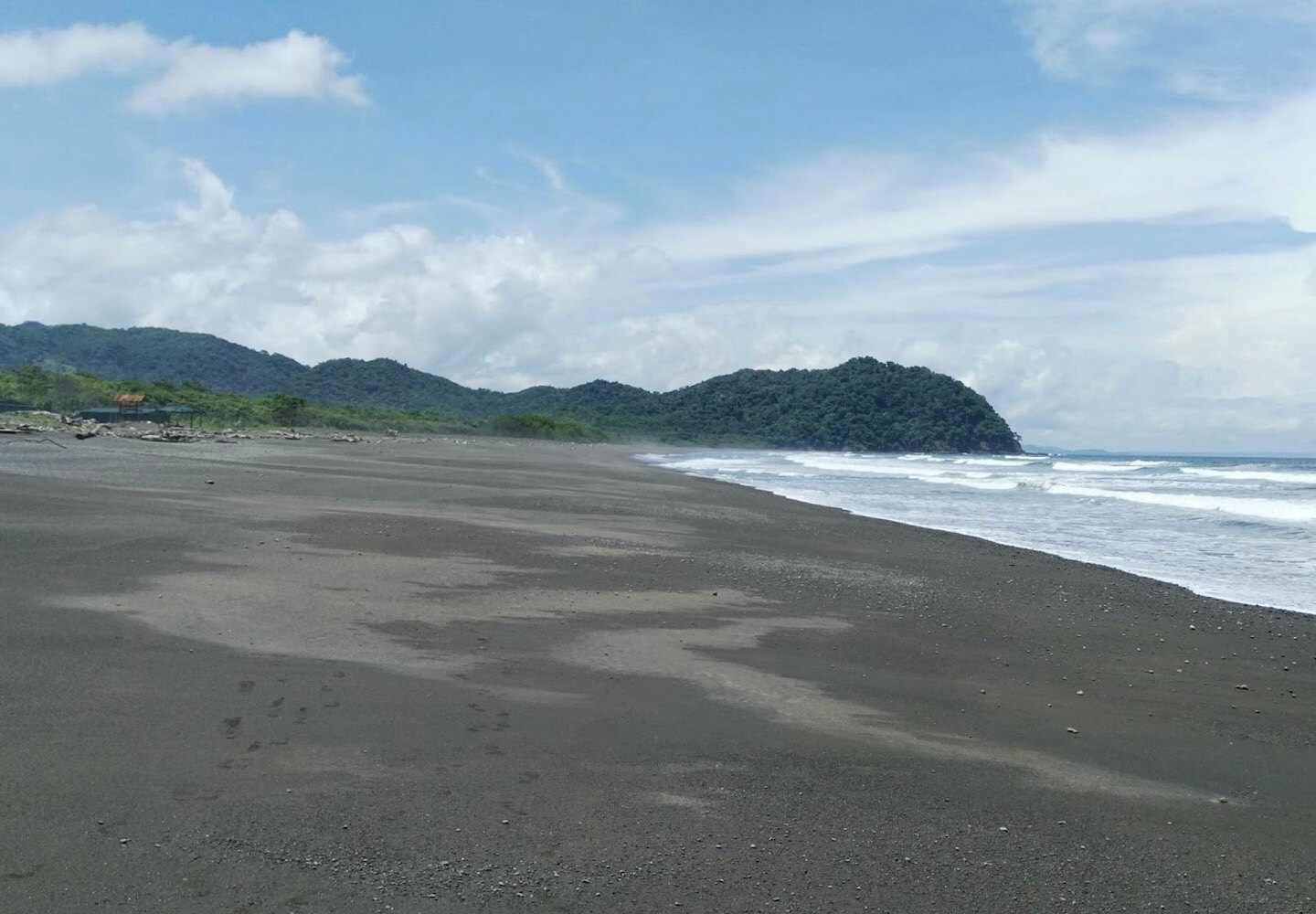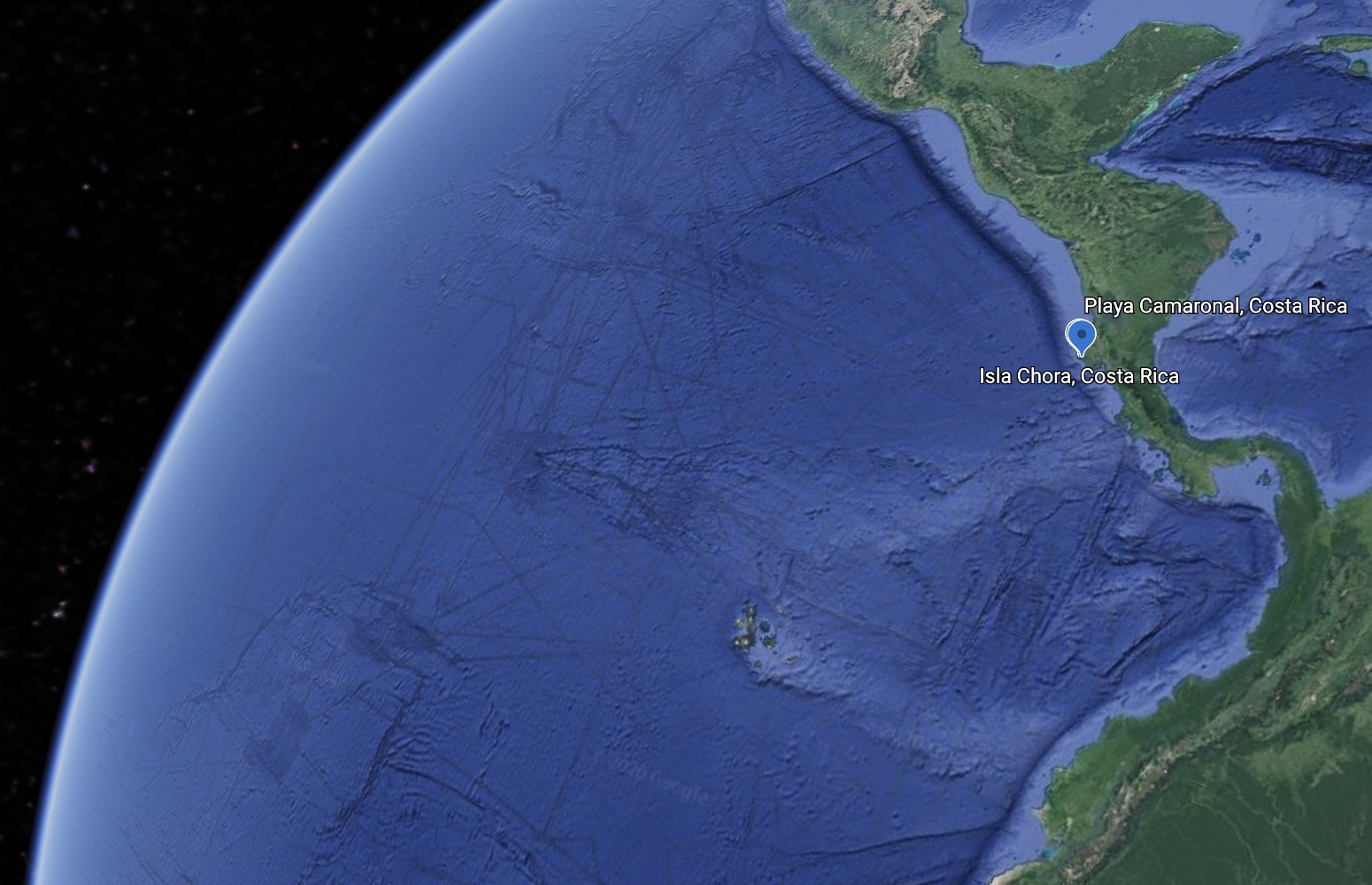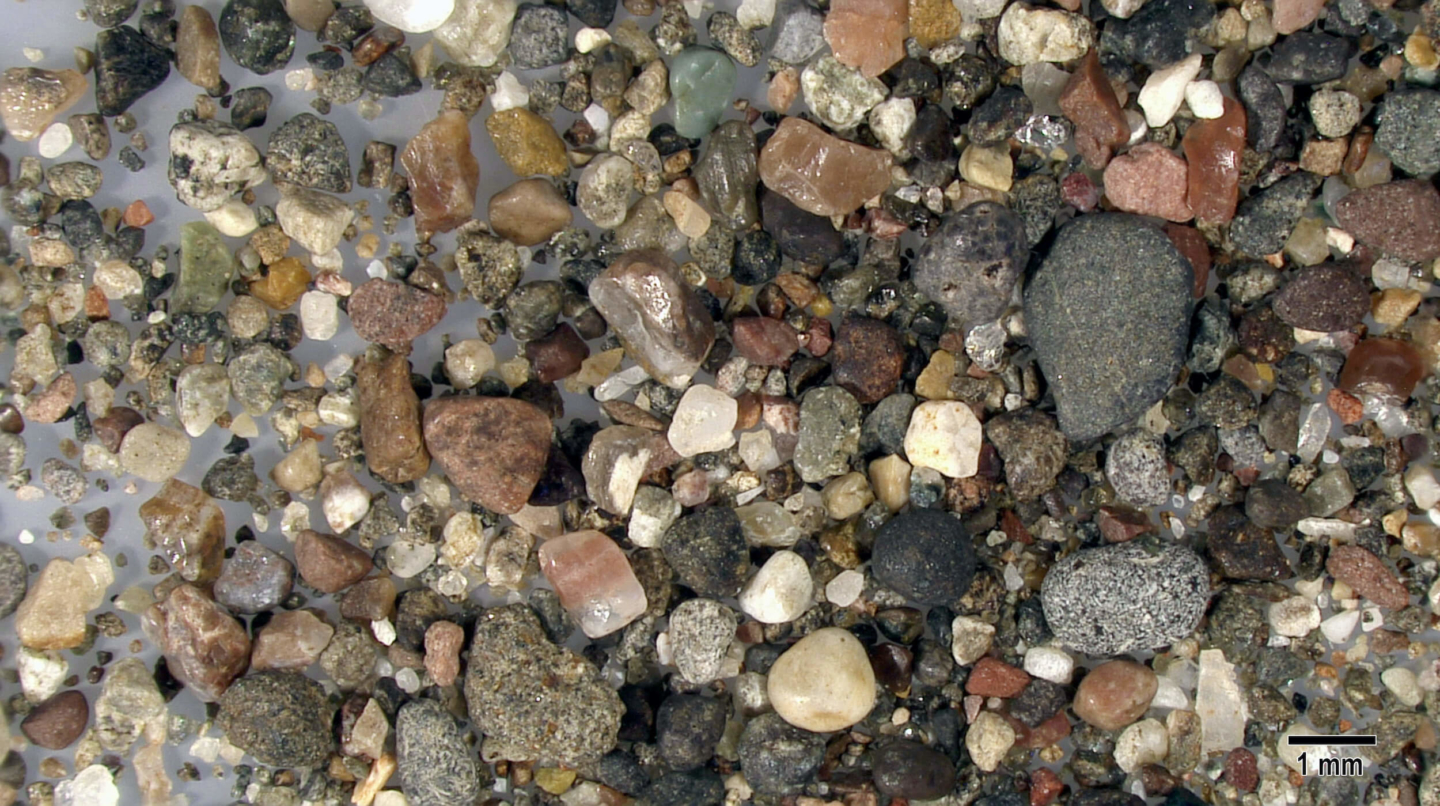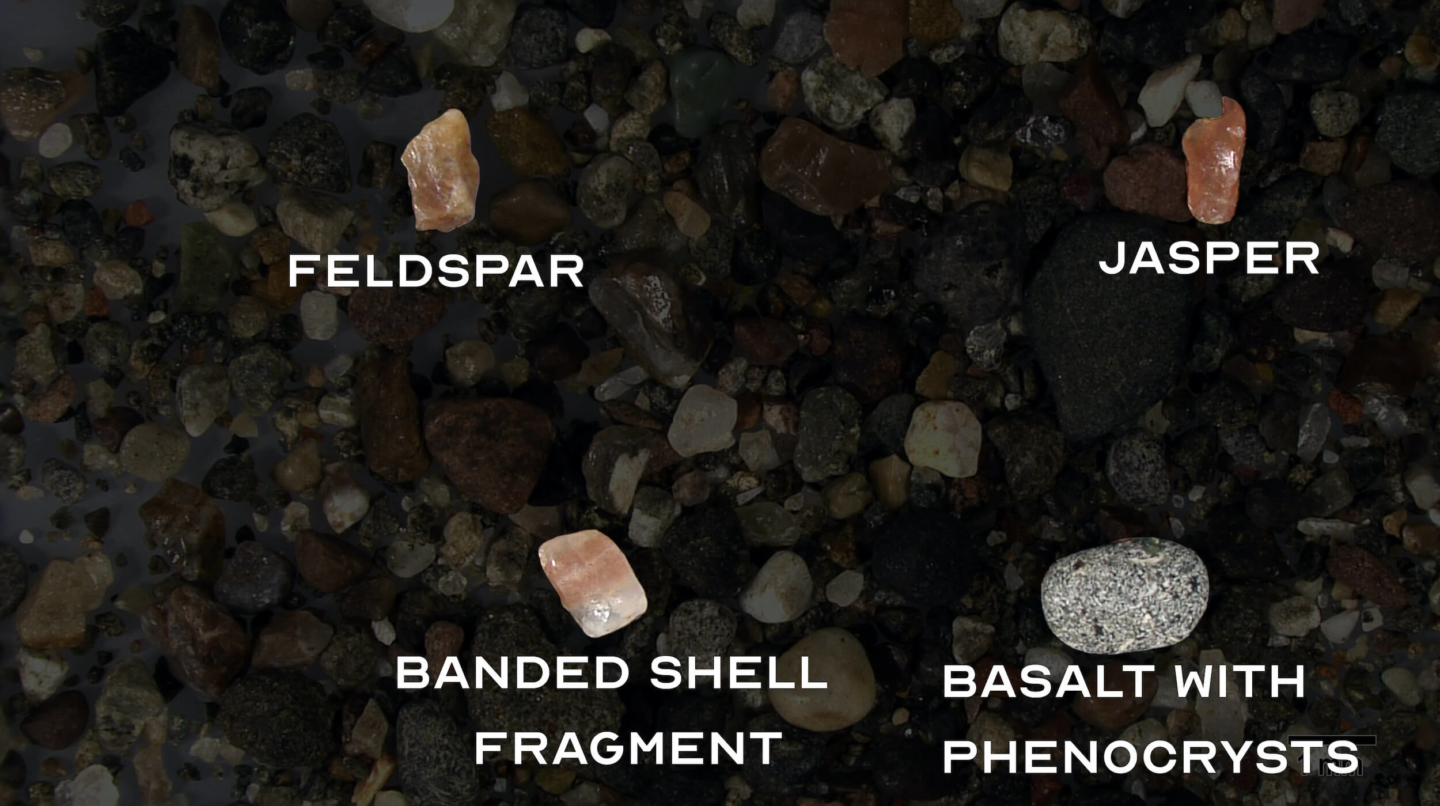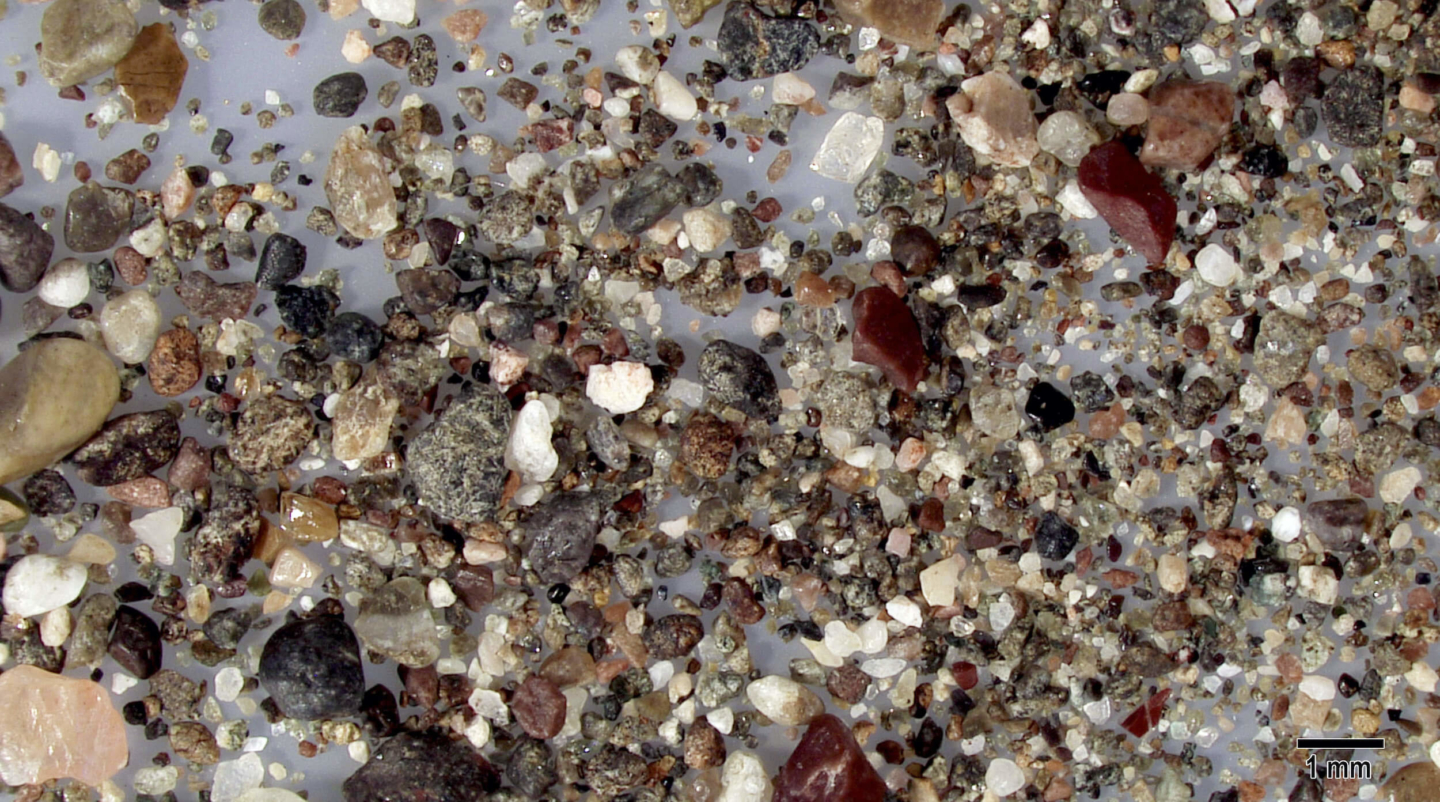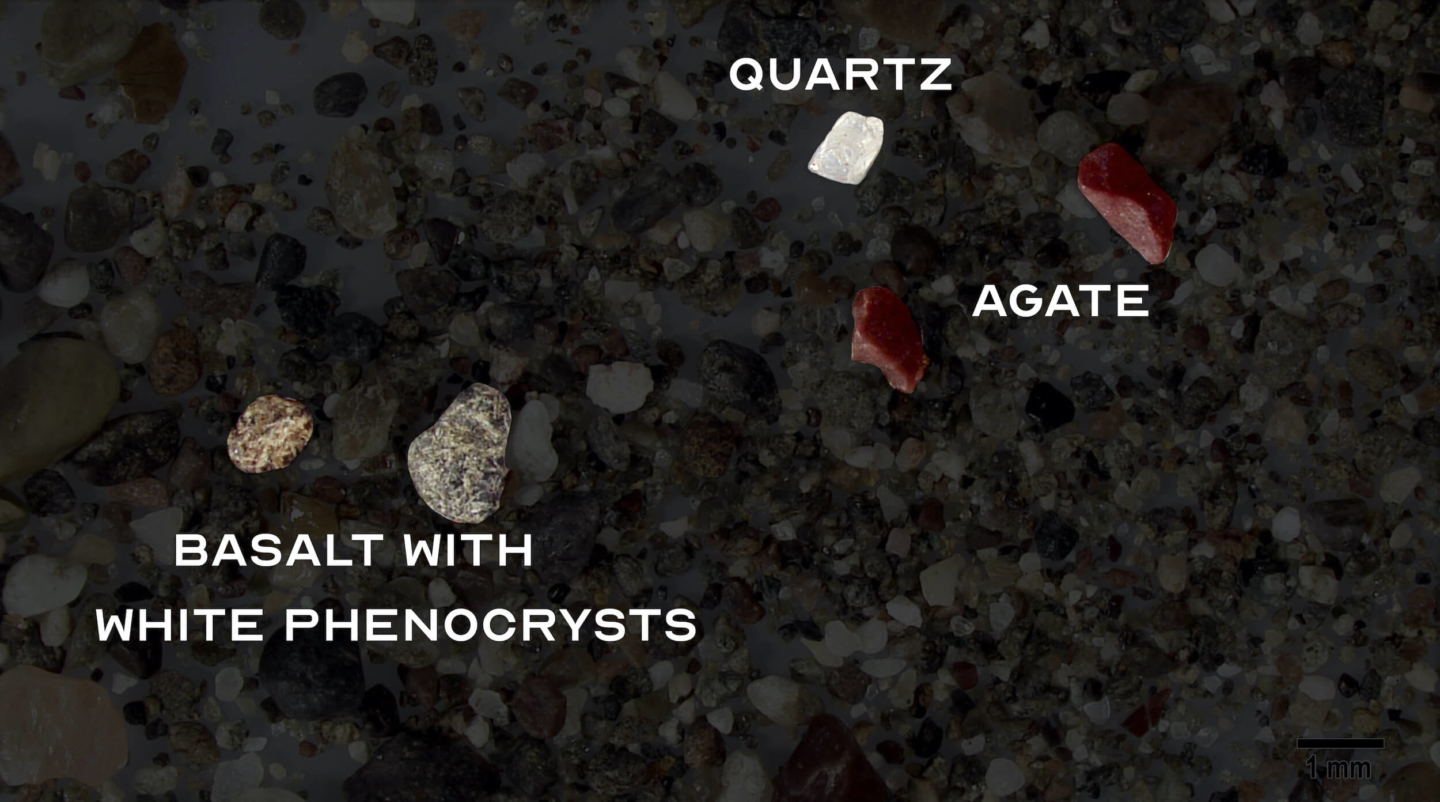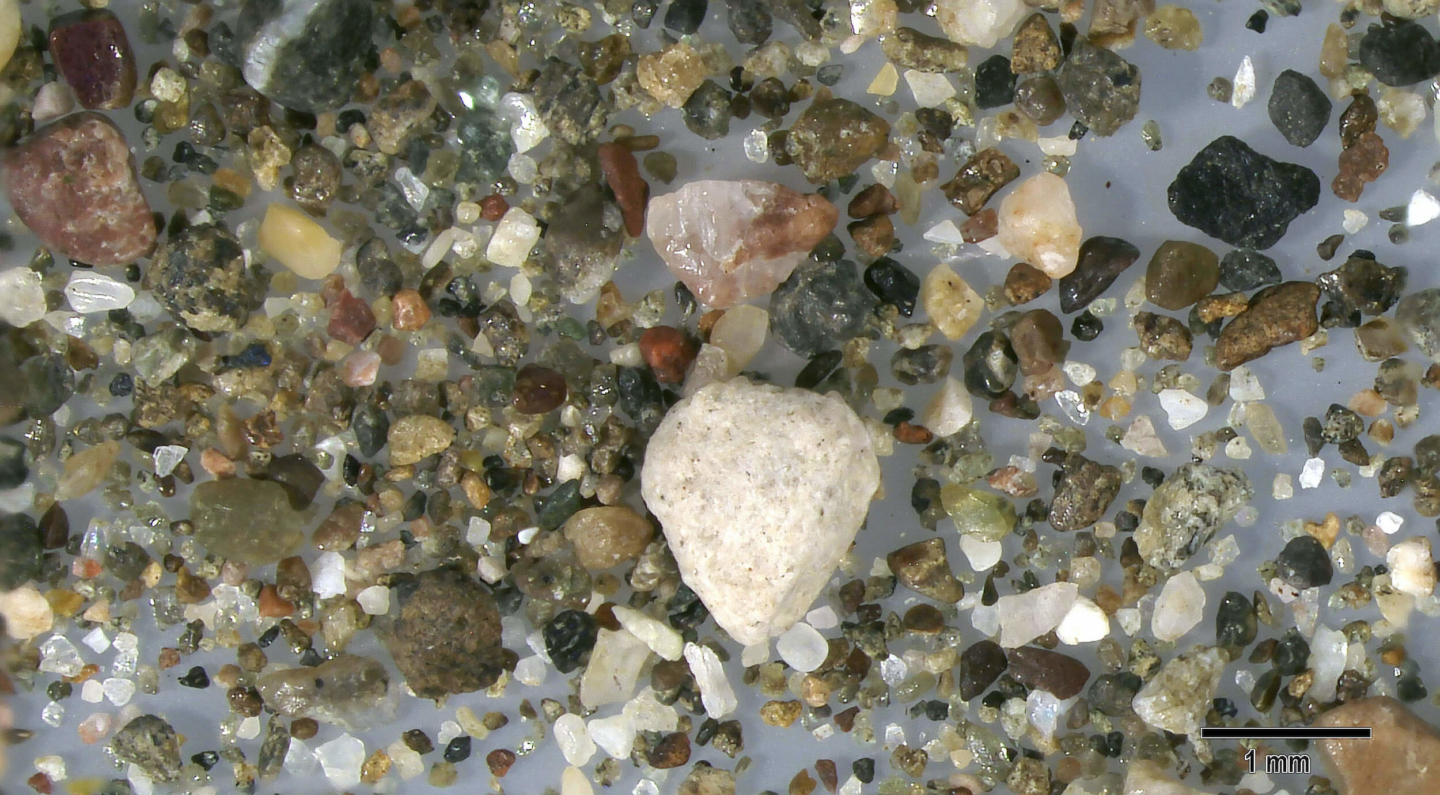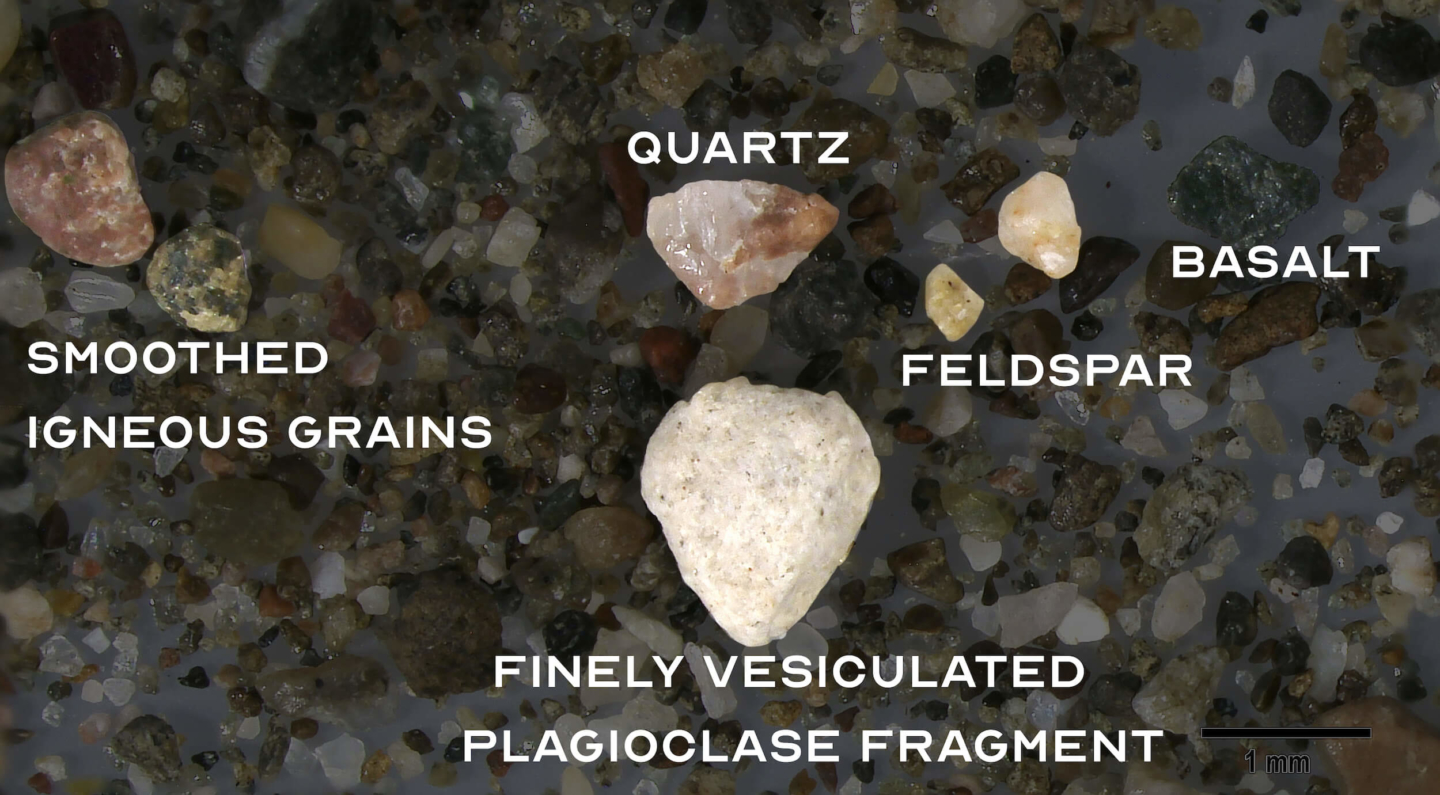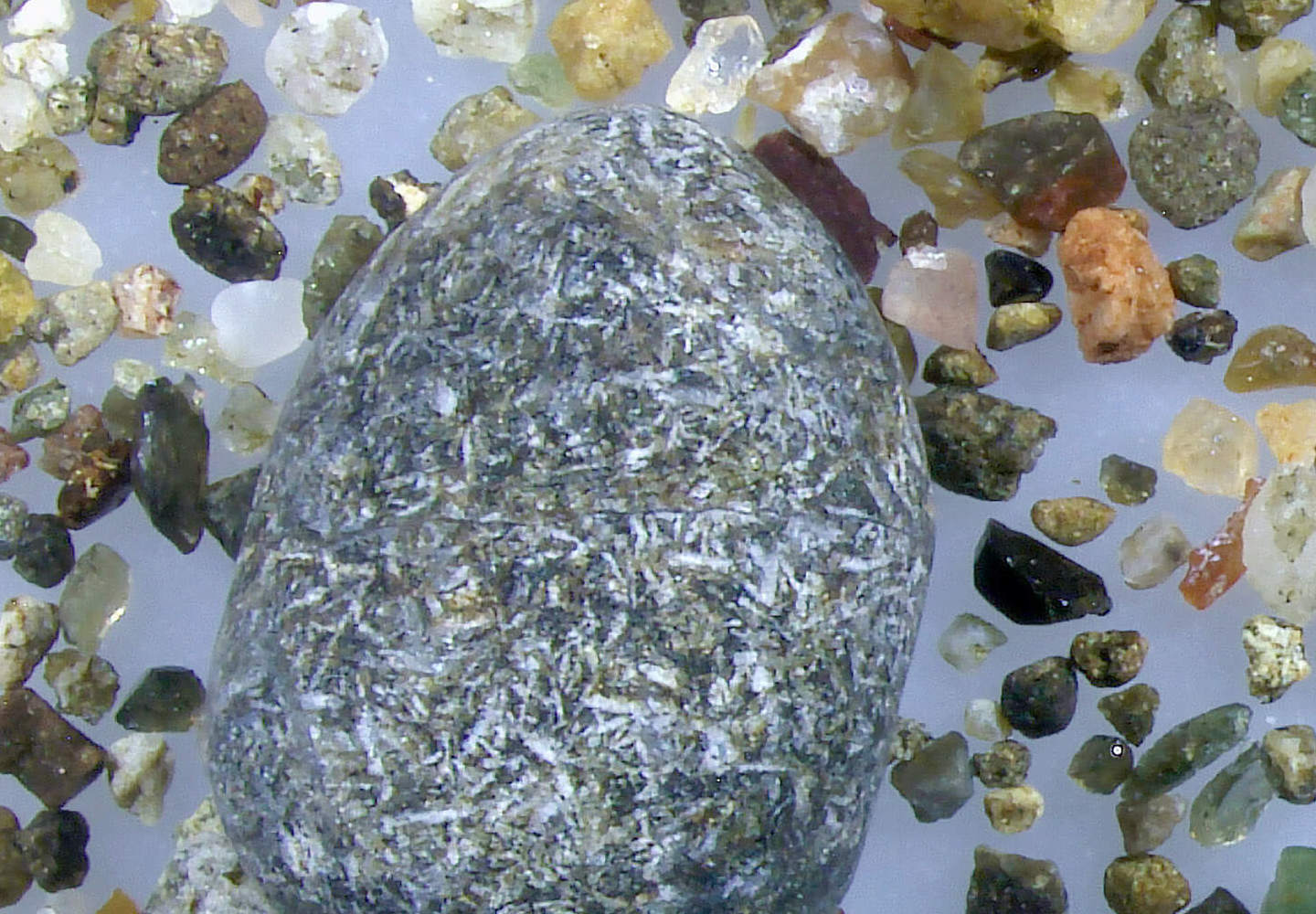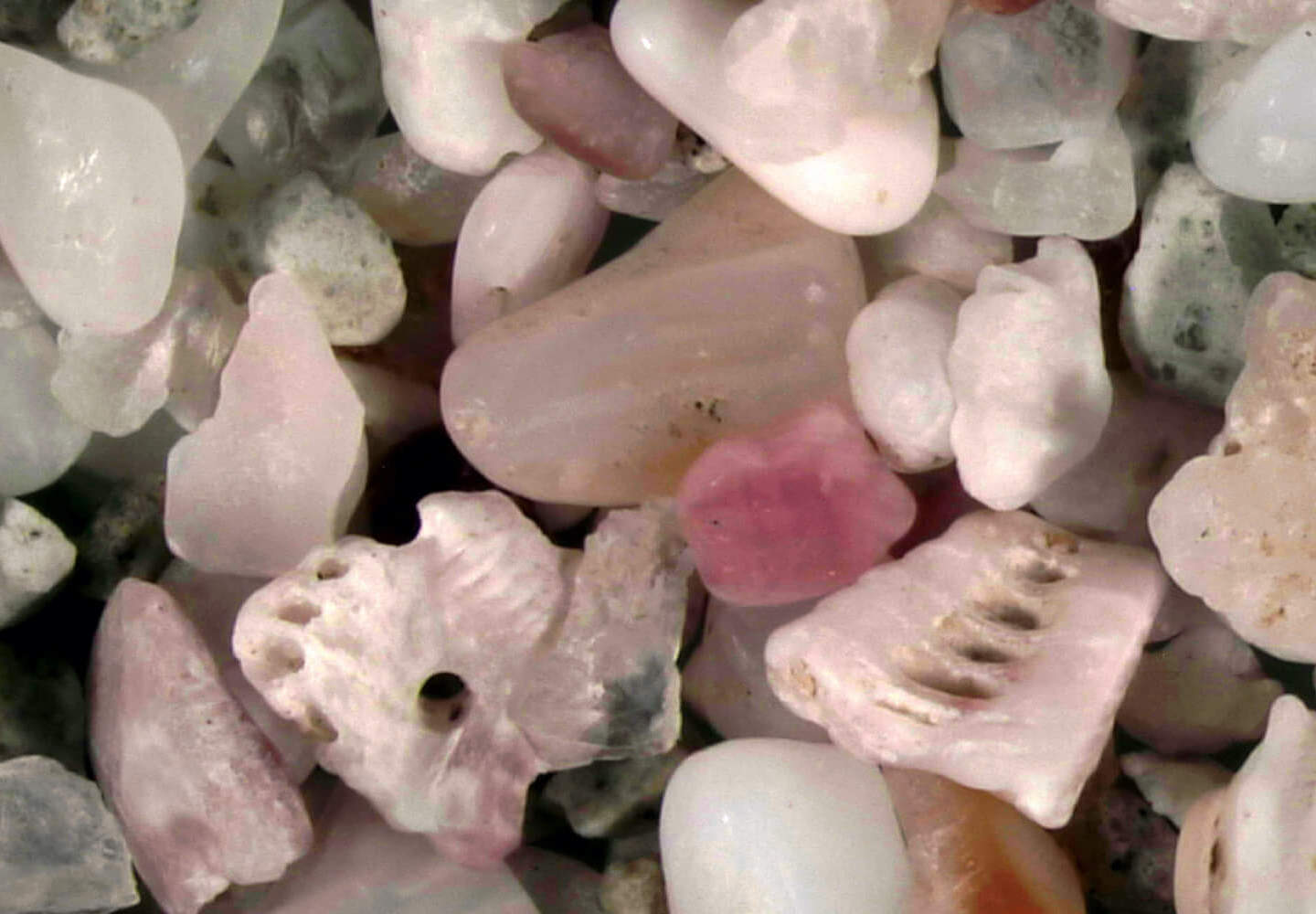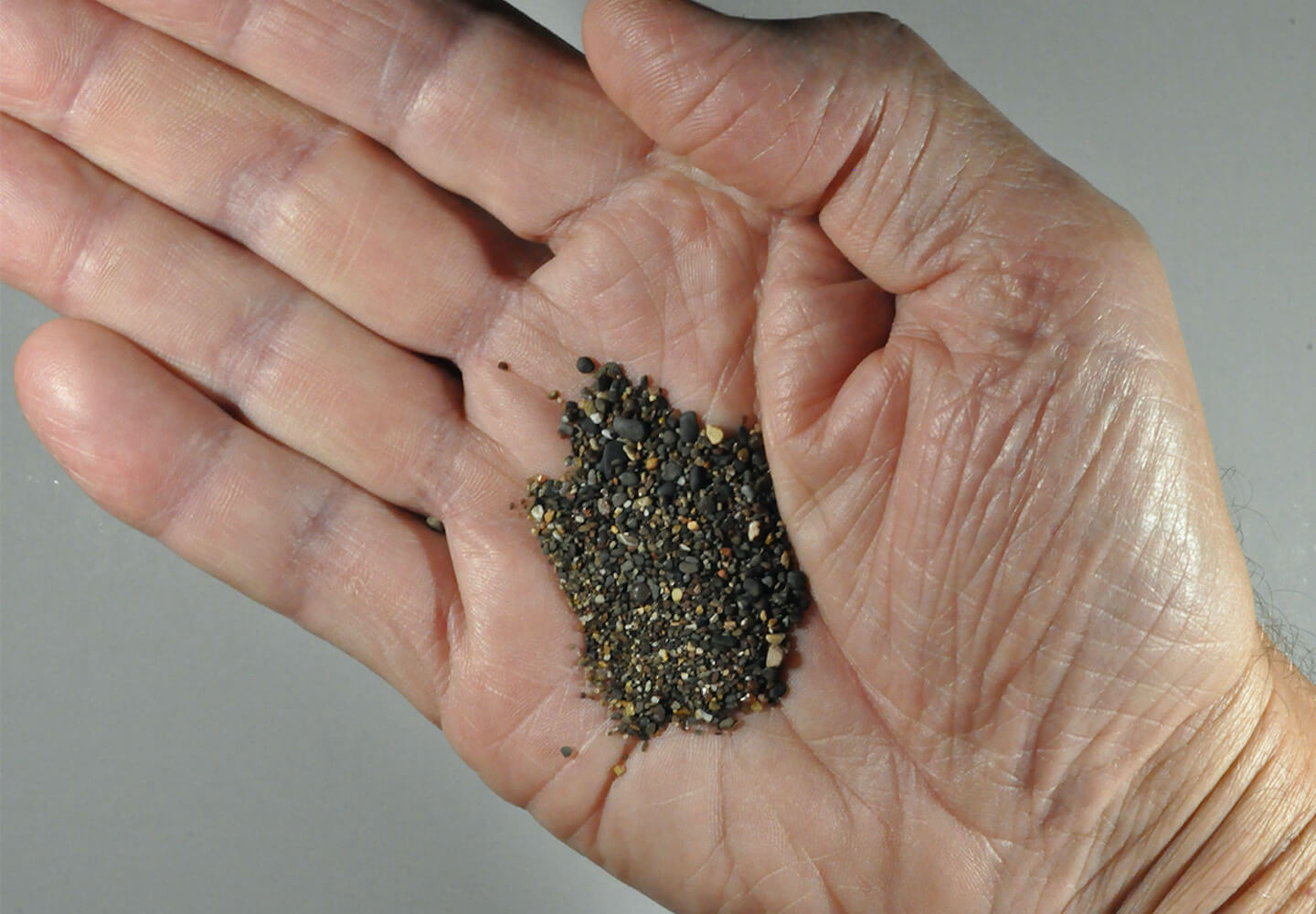
Playa Camaronal is on the western Pacific Coast of the Nicoya Peninsula 7 miles (14 kilometers) from Playa Samara and Isla Chora. Dark volcanic sand is carried from the adjacent rugged mountainous terrain and deposited at the mouth of the Ora River. In contrast, nearby Isla Chora sand is primarily biogenic.
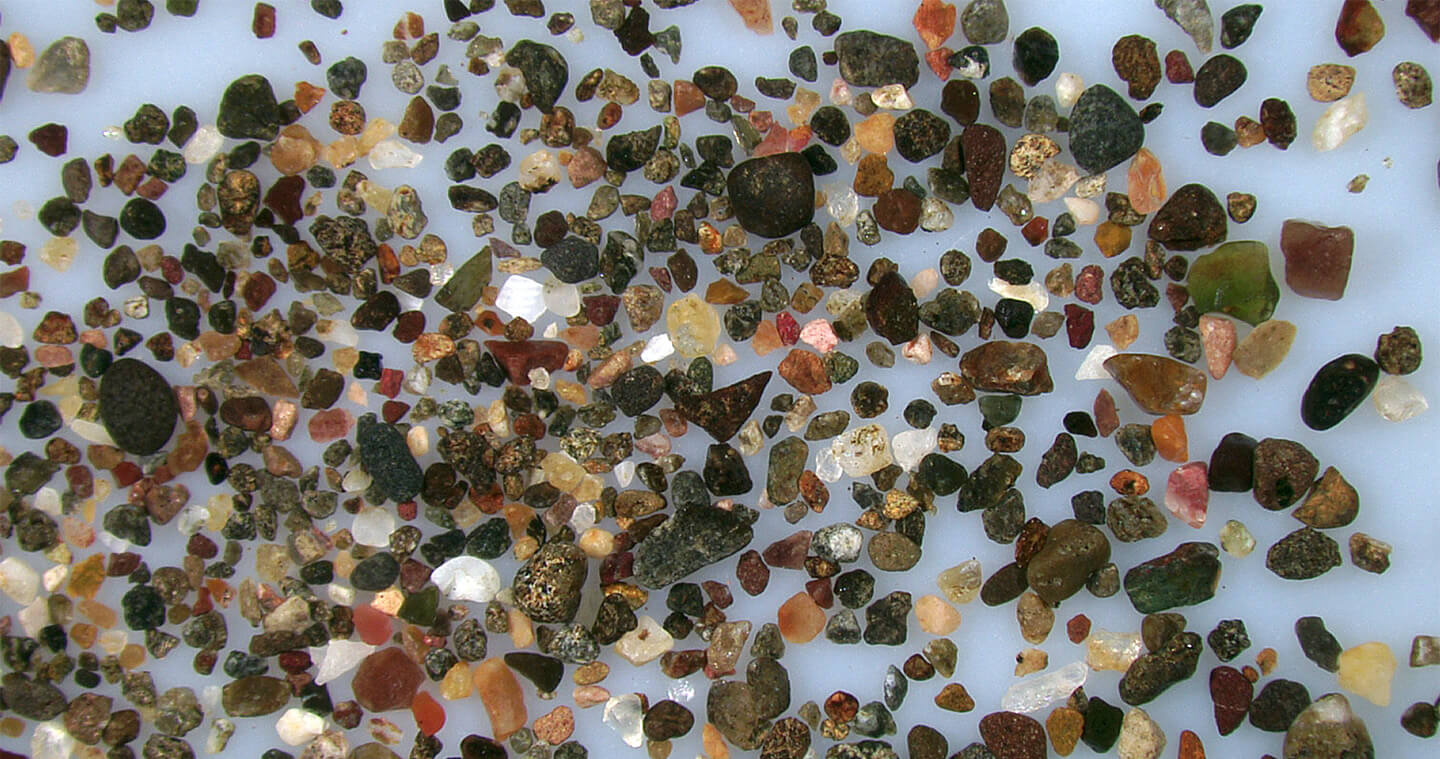
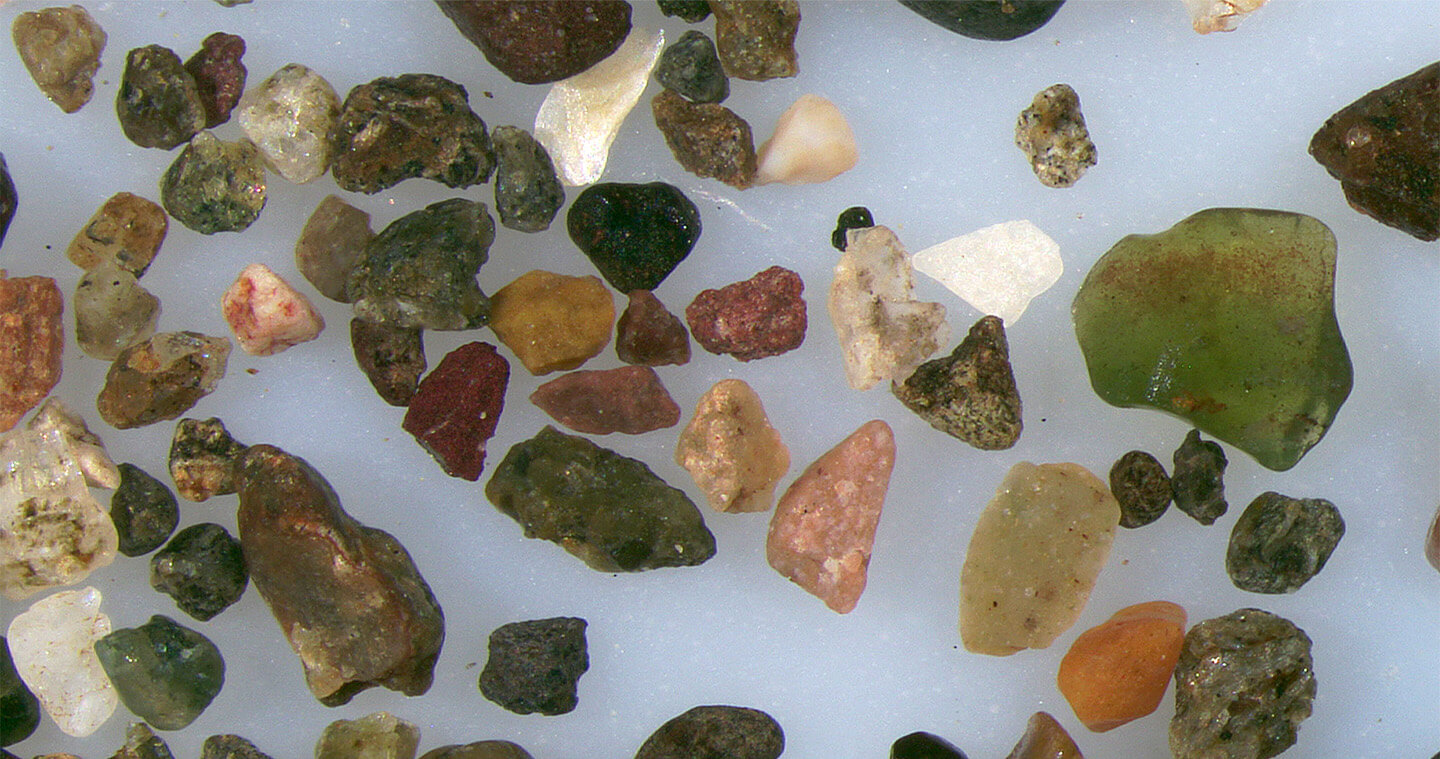
Geographic Overview
An upward growth of a series of underwater volcanoes that started 50 million years ago was assisted by a megathrust fault with subduction of the Cocos Plate beneath the Caribbean Plate that allowed Costa Rica and the Nicoya Peninsula to emerge from the sea and form a continuous bridge between North and South America. The megathrust fault is still active with a subduction rate of 9 cm per year.
Sand Gallery
Playa Camaronal is part of the 578-acre Camaronal National Wildlife Refuge. Four of the world’s seven species of sea turtles (the Olive Ridley, Atlantic Leatherback, Hawksbill and Black Sea Turtle) are found on the largely undeveloped shores of Playa Camaronal. The coastal beach is covered by variably sized igneous sand grains.
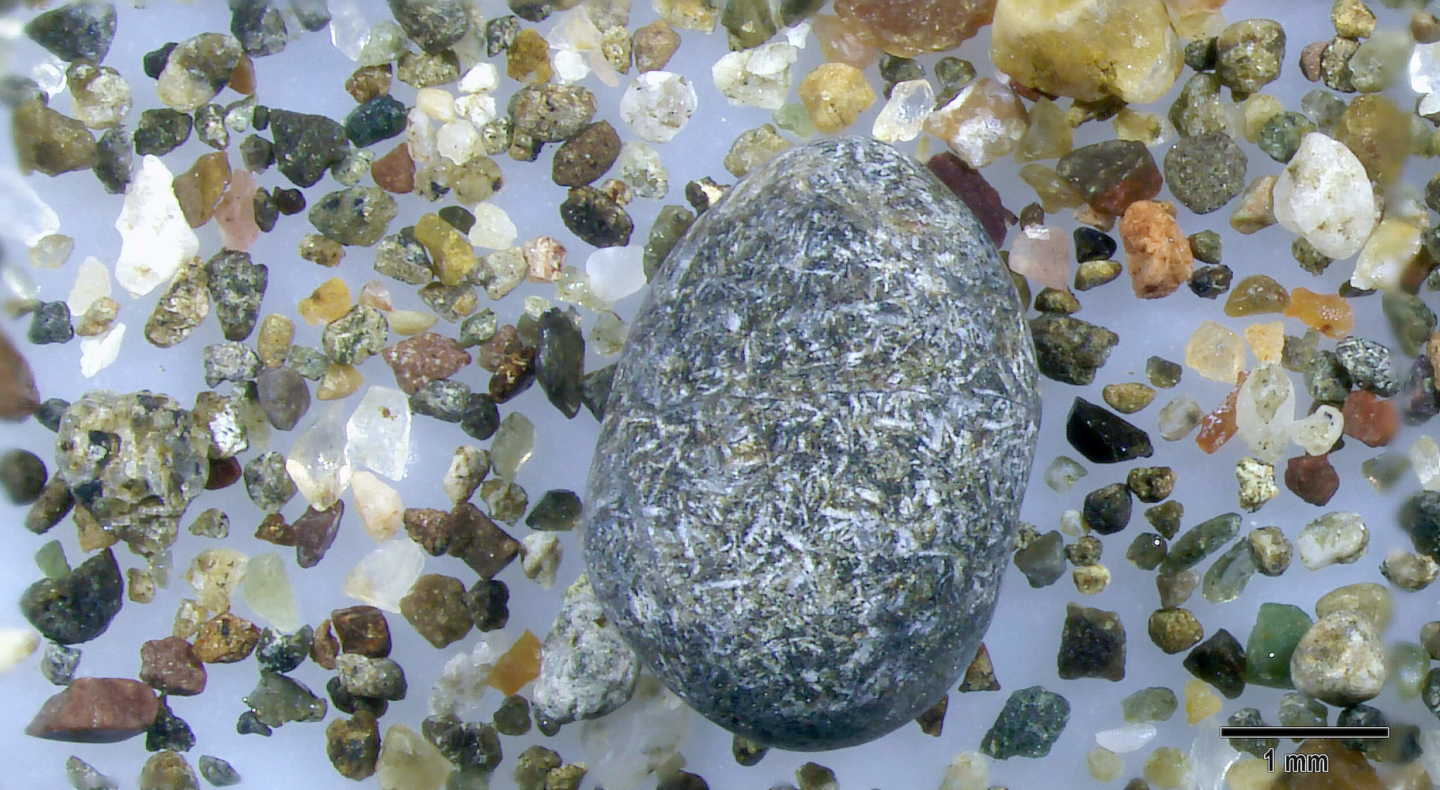
The large sand grain is porphyritic basalt contains white plagioclase phenocrysts and stands out in contrast to smaller tan and pink feldspar and a few light green olivine grains.
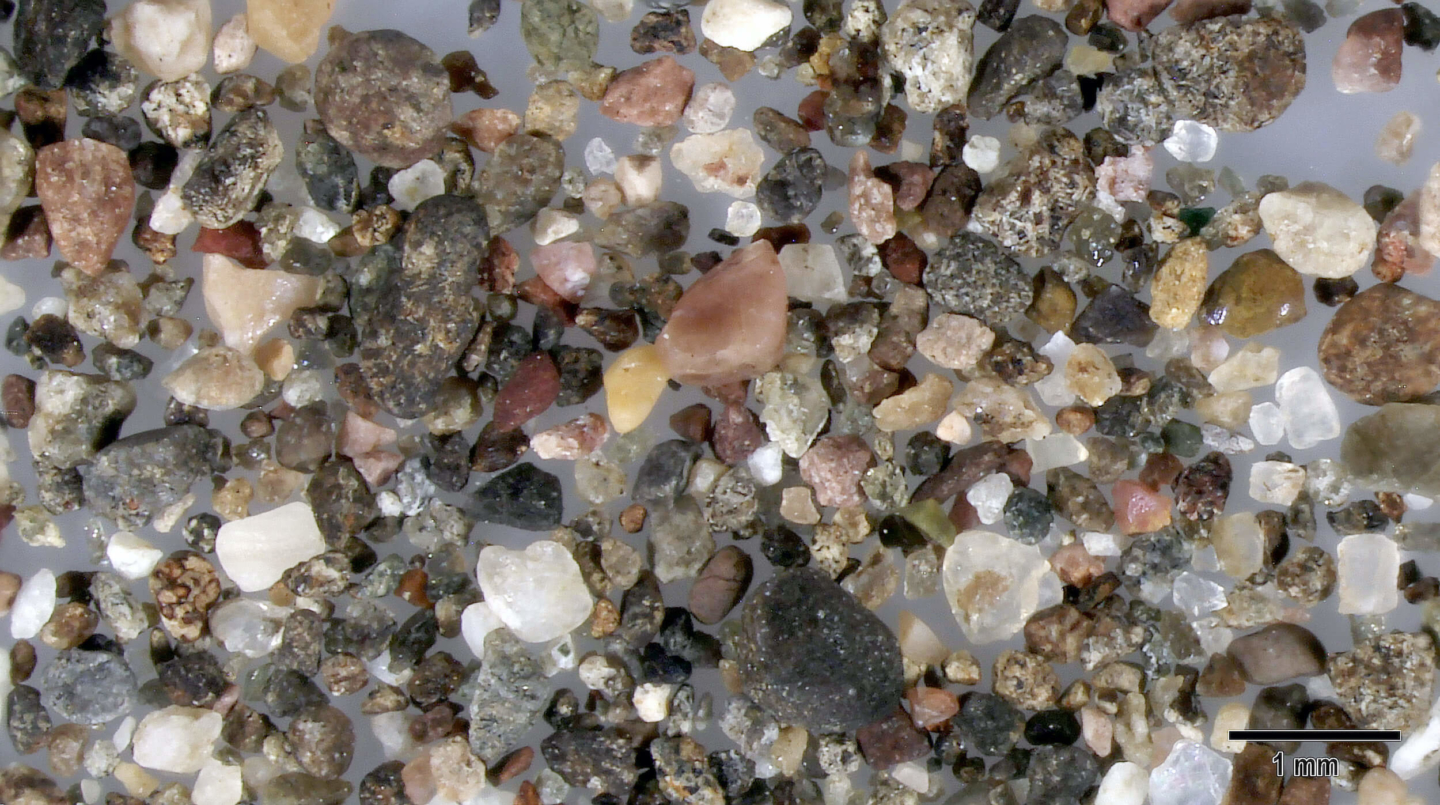
Light tan and pinkish-tan feldspar sand grains, some with 90-degree angles, are present in the center and near the left edge (9 o’clock) of the field. A 1 mm diameter dark basalt sand grain is at 6 o’clock and multiple porphyritic basalt sand grains stippled with white phenocrysts are present at the top right at 1 o’clock.
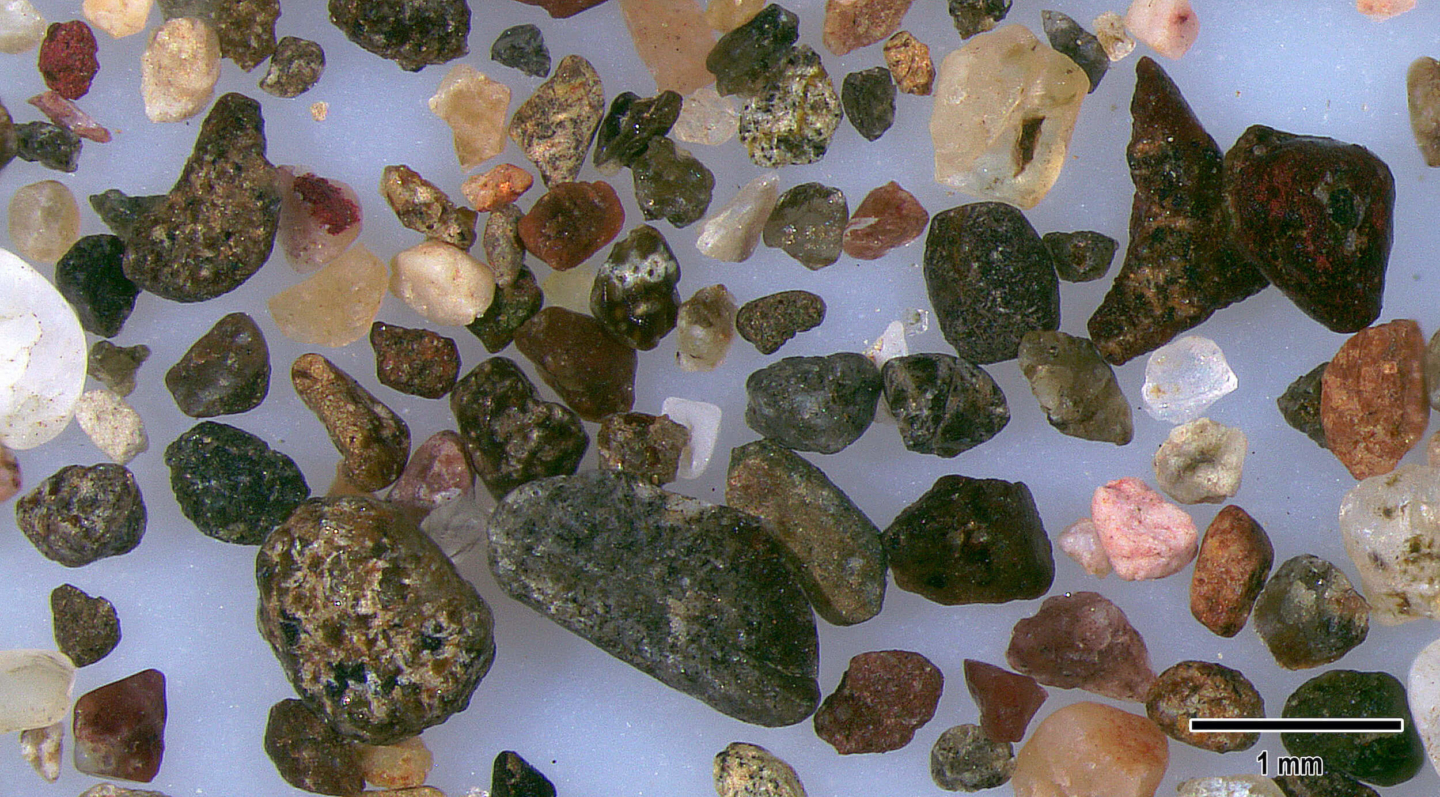
Small yellow-tan and pink plagioclase feldspar grains are present along with larger dark basalt sand grains.
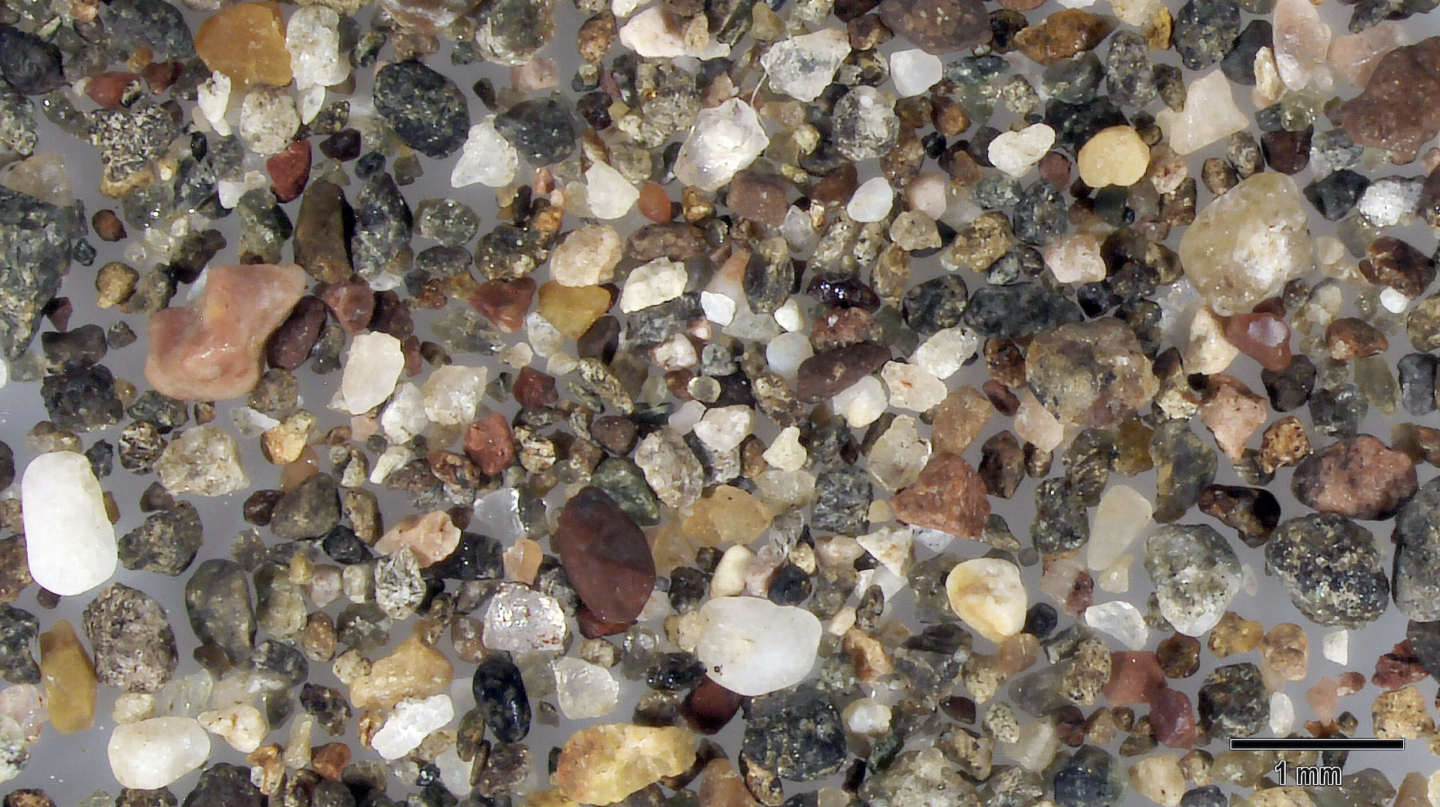
This is a mixture of multiple basalt sand grains that are stippled with white phenocrysts along with yellow and tan feldspar sand grains.
The sand at Playa Camaronal sand is largely volcanic. Roughly 5 miles away, Isla Chora is primarily biogenic sand.
